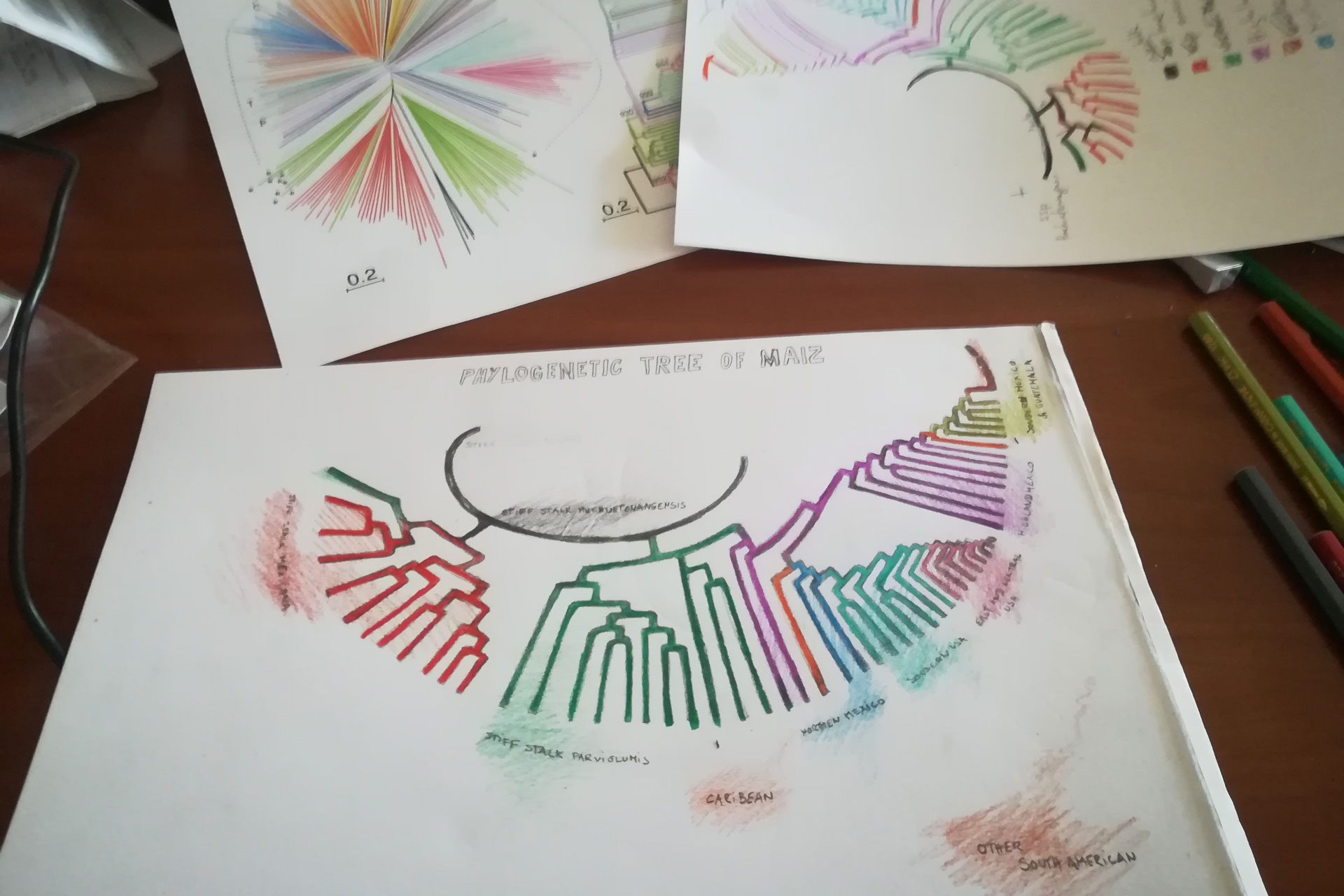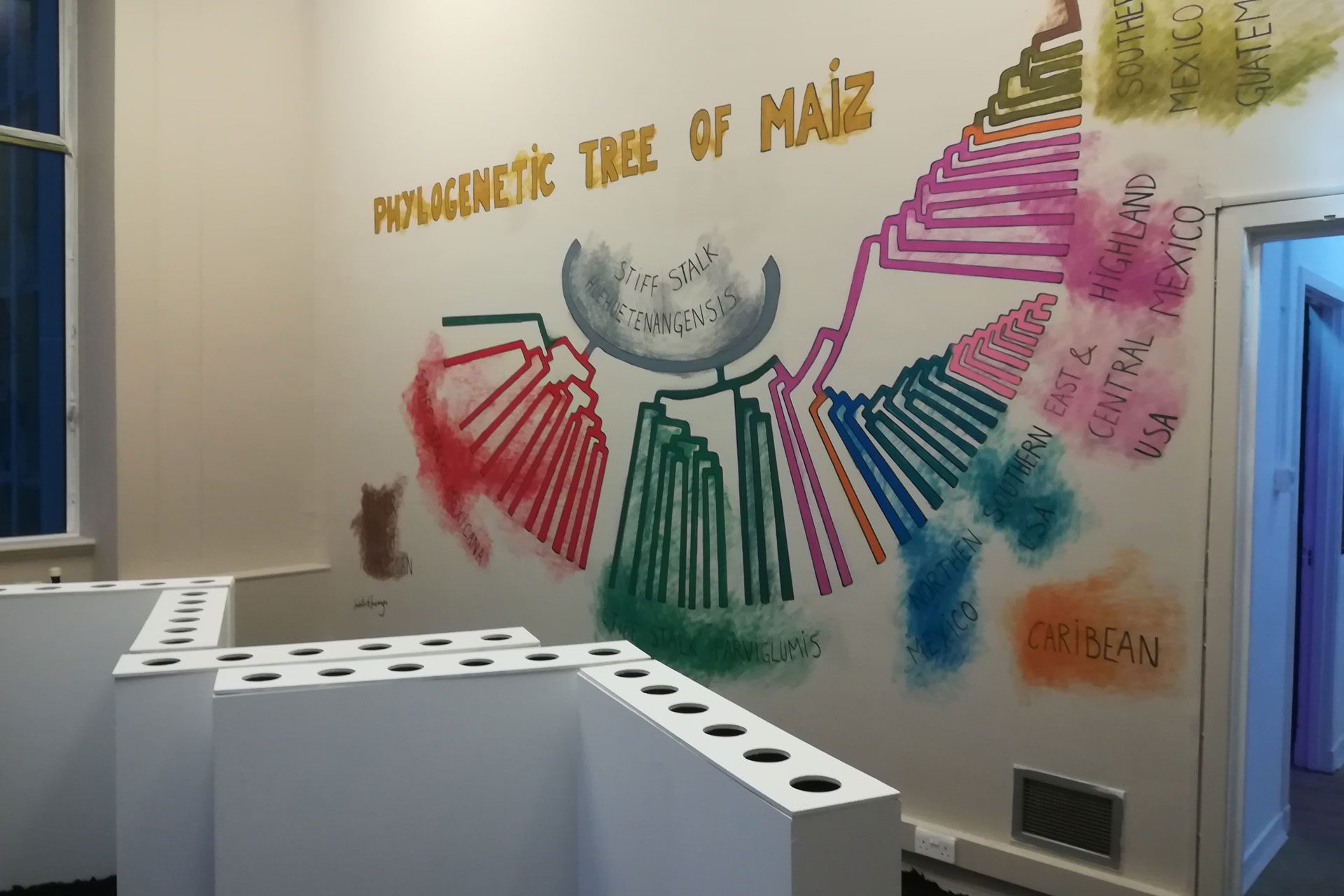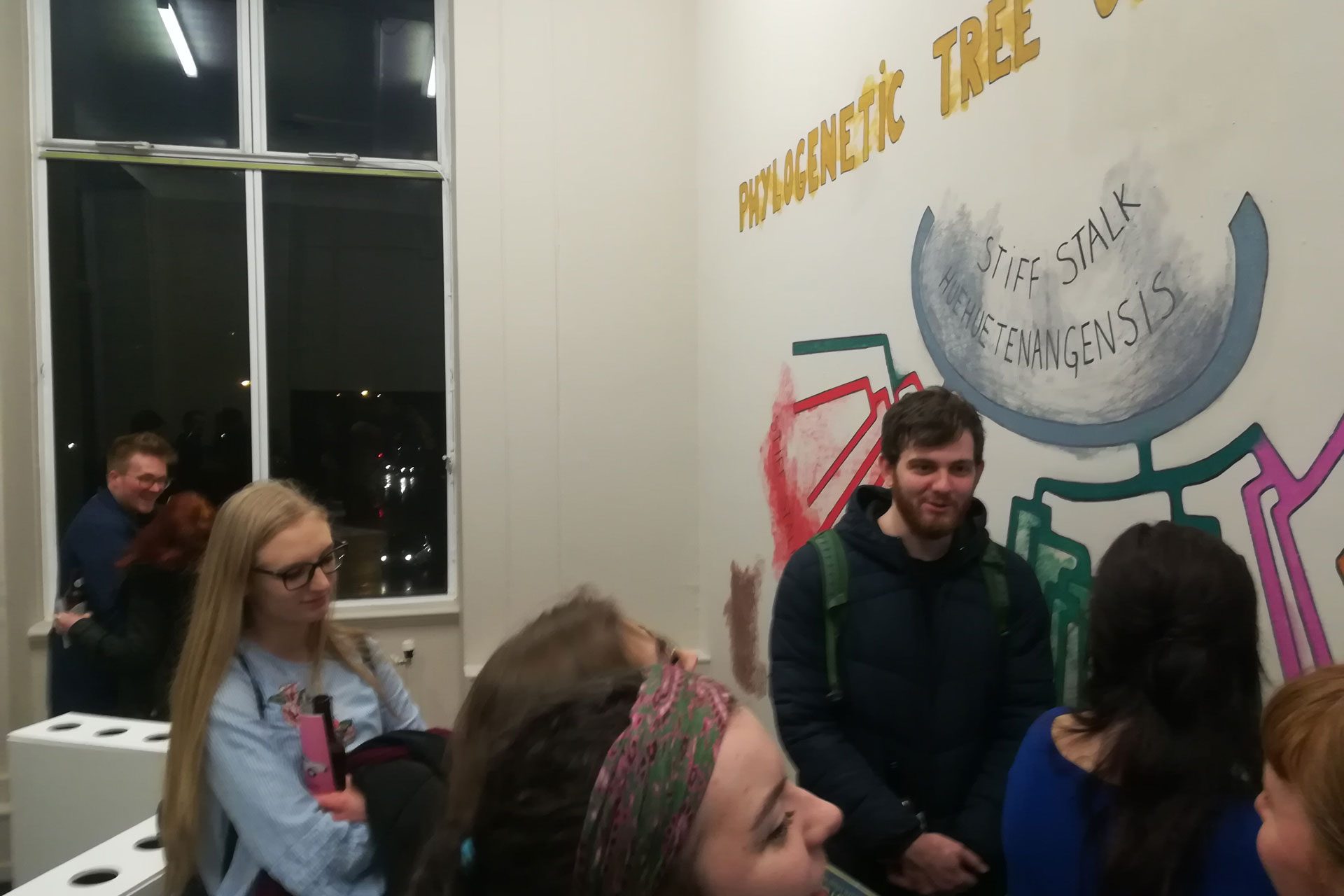In this work we will use CRISPR-Cas9 to silence a transgenic modification of corn, creating a new variety simultaneously natural and genetically modified.
Humans and corn have co-existed in central America for many generations influencing each other. The human society and culture has been shaped by corn while, simultaneously, humans have progressively modified the characteristics of corn. Slowly, through centuries, yet relentlessly, both human culture and corn varieties changed together.
In recent years, however, biotechnology allowed the fast change of corn leading to a massive increase in its productivity, taking advantage of biological traits of the plant – namely its photosynthesis efficiency – that may perhaps be exported to other species such as rice.
The fast change in the plants did not have parallel in the Mexican culture where less mainstream corn varieties are still favoured for traditional dishes. The silencing of a transgene by CRISPR-Cas9 creates a tension by generating a natural plant by means of genetic intervention, it questions the limits of the natural, where all crops are a consequence of co-evolution with humans.
Marta de Menezes
Corn is not just a plant; it is a bio artefact in many ways. Not only because it has been selected and domesticated for thousands of years by Mesoamerican cultures, but also because its growth and spread is linked to its cultural meaning.
The limits of corn are not material; it cannot be understood as a single separate entity that can be biotechnologically modified because the technology is able to do it. Corn is a multi-layered entity that has been built according to contexts and circumstances, from environment to cuisine recipes.
To modify matter in a bio artefact that is a hybrid of cultures, techniques, crops, varieties, rituals, myths, traditions, food, etc., is only to modify a tiny part of what this organism actually is. The question about genetically modified corn is then not just about transgenics, health, agroindustry and transnational companies taking control of a huge variety of seeds. The question is about a complex unity of corn, production, consumption and the spaces in which that is taking place.
Corn out there in the field being grown through traditional crops or controlled through industry and technology. Who is growing corn, where and with what purpose? Who is eating/using corn, where and with what purpose? As massive food for animals that cannot process it, e.g., cows, to biofuels to plastics, corn is being used in industrialized ways that transform it profoundly.
To alter it through CRISPR-Cas9 editing the genome in order to bring back what was not originally there, but just previously there, is a radicalization of the non-existing frontier between natural and artificial that brings to the front the idea that the question is not about matter and its material modifications.
Corn is not just a plant, it is a myriad of transformations and interrelations that implicate many agents and agencies.
Maria Antonia Gonzalez Valerio
Acknowledgements:
Dr. Nelson Saibo , Principal Investigator @Plant Gene Regulation Laboratory, ITQB, Portugal
http://www.itqb.unl.pt/research/plant-sciences/plant-gene-regulation/plant-gene-regulation




